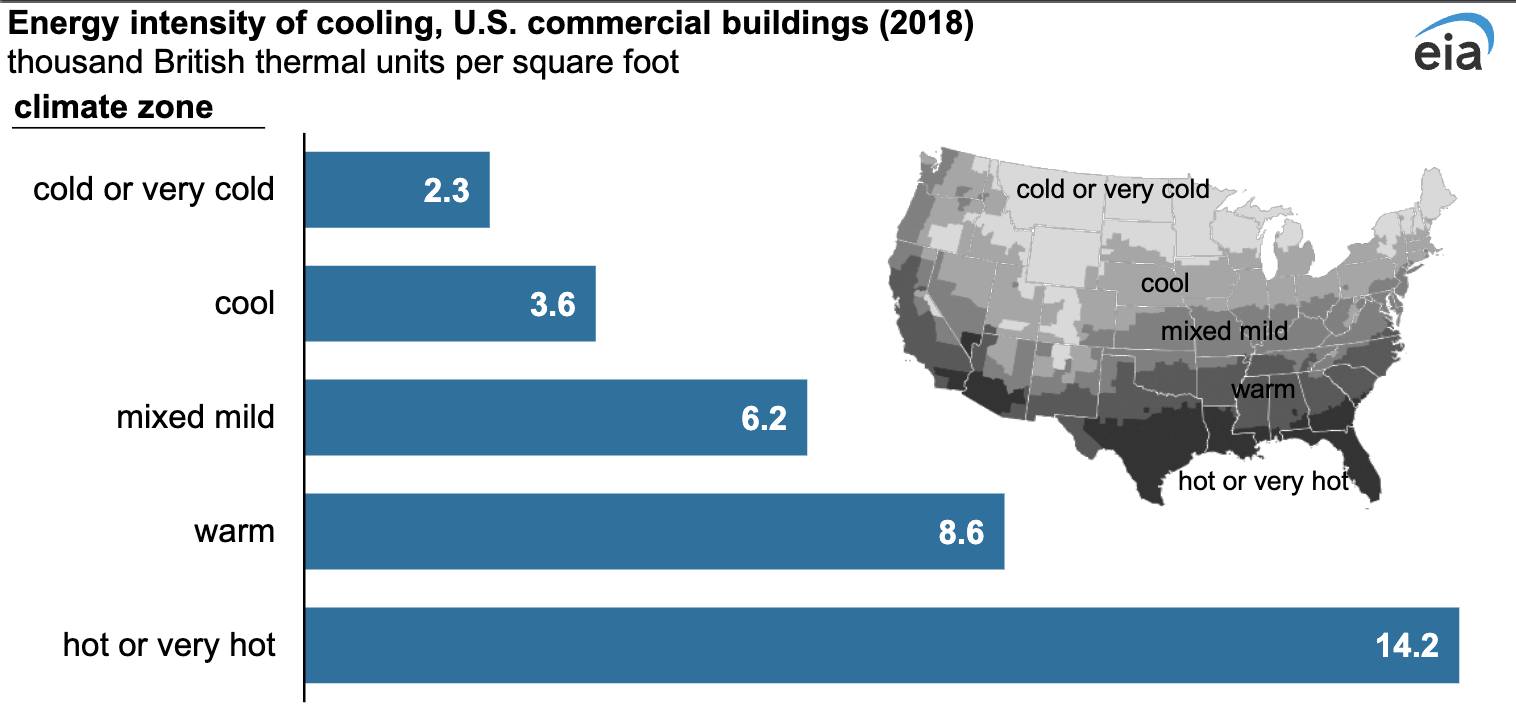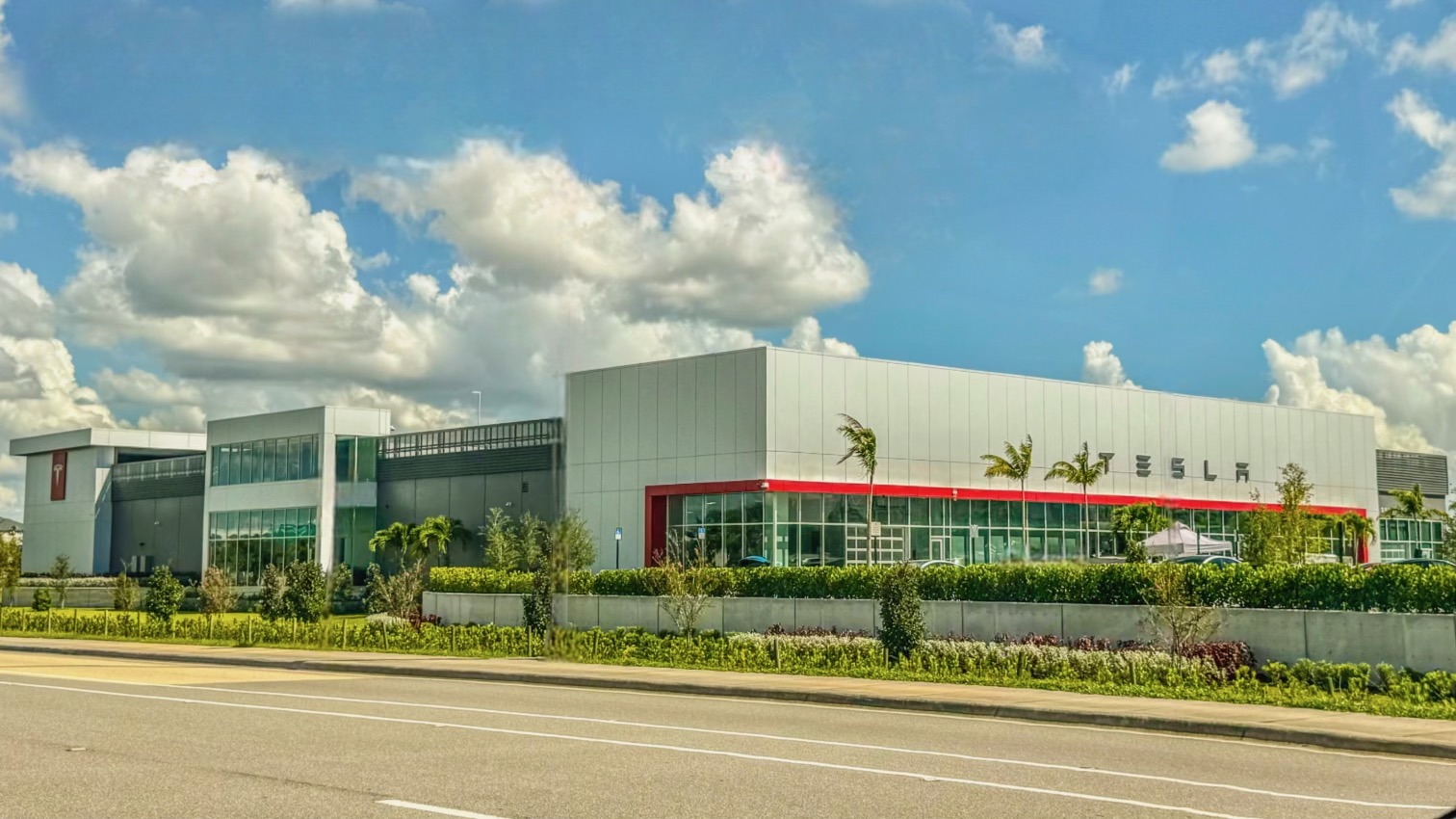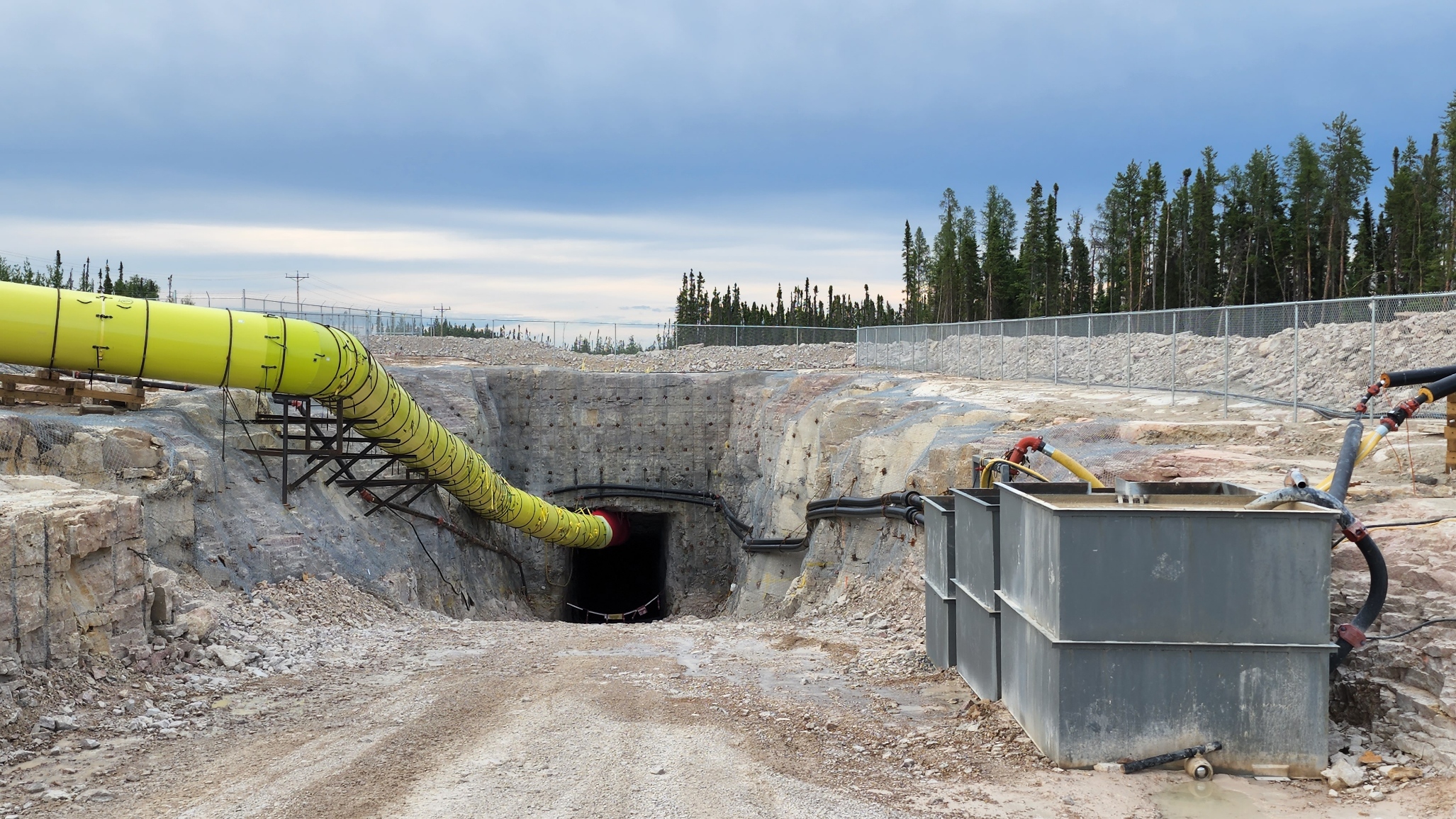

Data source: U.S. Energy Information Administration, Commercial Buildings Energy Consumption Survey (CBECS); ANSI/ASHRAE Standard 169-2021, Climatic Data for Building Design Standards
The energy intensity for cooling commercial buildings in the United States depends on the climate the building is located in. Energy intensity in buildings is the energy consumed per square foot of floorspace. U.S. commercial buildings in hot or very hot climates, which are primarily in the southernmost parts of the country, were more than six times more energy-intensive for cooling (14.2 thousand British thermal units per square foot [MBtu/sf]) than buildings in cold or very cold climates (2.3 MBtu/sf), according to our latest Commercial Buildings Energy Consumption Survey (CBECS).
The climate zones in our 2018 CBECS are based on the climate zones in ANSI/ASHRAE Standard 169-2021, Climatic Data for Building Design Standards. This standard designates climate zones using annual average temperature and precipitation data from 1994 to 2019. We calculate cooling energy-intensity estimates for climate zones by dividing the consumption of major fuels (electricity, natural gas, district heat, and fuel oil) for cooling by the total floorspace of buildings that used one of those fuels for cooling in each climate zone.
Commercial buildings in warmer climate zones were both more likely to be cooled and to cool larger portions of their floorspace. In 2018, 52% of buildings in the hot or very hot climate zone reported cooling all of their floorspace. In contrast, only 25% of buildings in the cold or very cold climate zone reported cooling all of their floorspace.
Electricity is the predominant energy source used for air conditioning, accounting for 98% of the 589 trillion Btu of major fuels consumed for cooling in 2018. Only the mixed mild climate zone had a slightly lower share of electricity consumed for cooling (96%). An additional 55,000 buildings (1% of buildings with cooling) used district chilled water systems for cooling. Other fuels used for cooling include natural gas, district heat, and fuel oil.
In 2018, 55% of commercial buildings with cooling reported using packaged air-conditioning units. Packaged cooling equipment—the most common cooling equipment across all climate zones—is a self-contained unit that can provide either space heating or cooling, as desired. Packaged units were used by 66% of air-conditioned buildings in the hot or very hot climate zone and 48% of air-conditioned buildings in the cold or very cold climate zone.
CBECS is the only nationally representative survey that collects information about U.S. building characteristics and energy use in commercial buildings. CBECS publishes a variety of data including building size, activity, energy sources, energy end uses, operating hours, and more.
The CBECS survey process spans more than four years, from developing the sample frame and survey questionnaire to releasing data to the public. Our final 2018 CBECS data were released in December 2022.
Principal contributors: Zack Marohl, Stacy Angel
Originally published on the U.S. EIA’s Today In Energy blog.
I don’t like paywalls. You don’t like paywalls. Who likes paywalls? Here at CleanTechnica, we implemented a limited paywall for a while, but it always felt wrong — and it was always tough to decide what we should put behind there. In theory, your most exclusive and best content goes behind a paywall. But then fewer people read it! We just don’t like paywalls, and so we’ve decided to ditch ours. Unfortunately, the media business is still a tough, cut-throat business with tiny margins. It’s a never-ending Olympic challenge to stay above water or even perhaps — gasp — grow. So …




